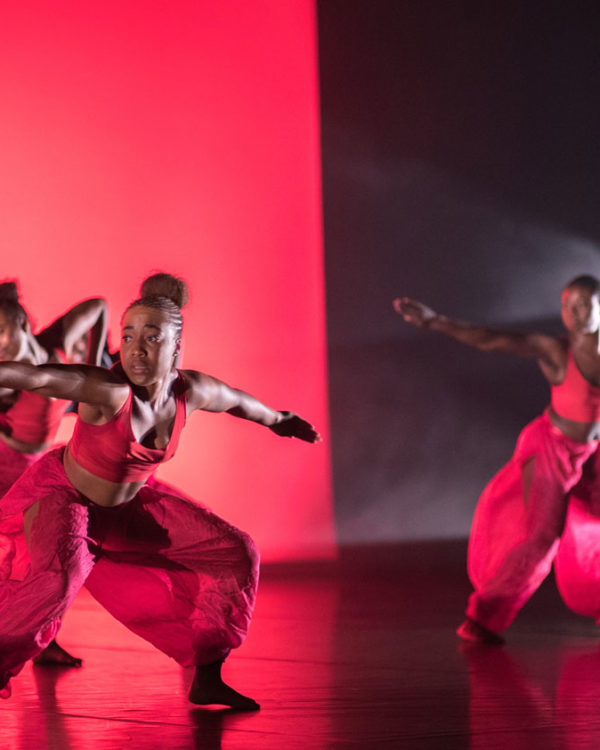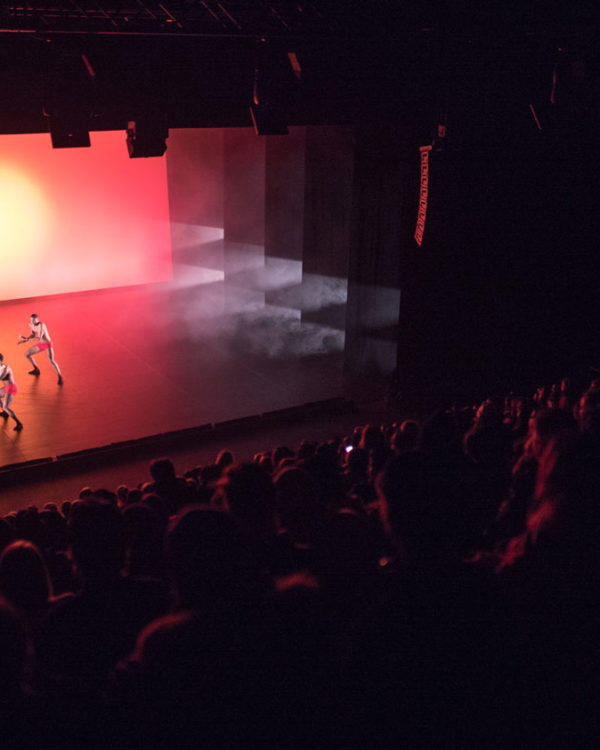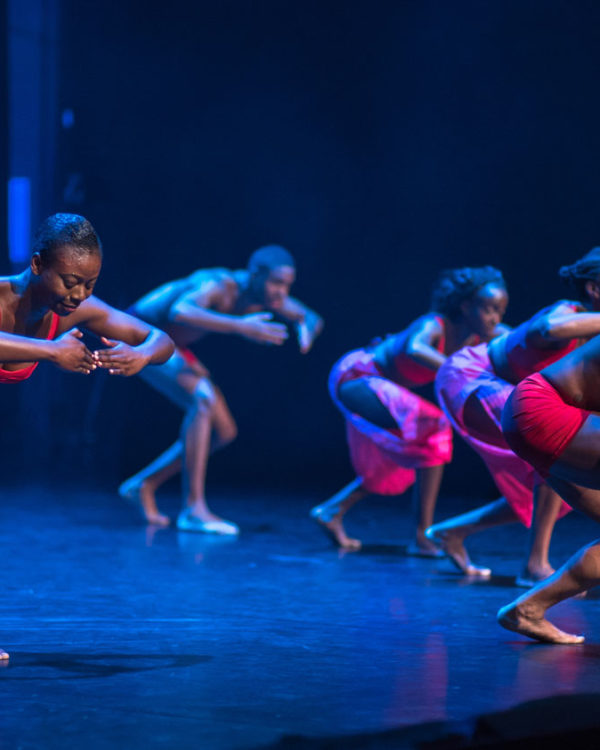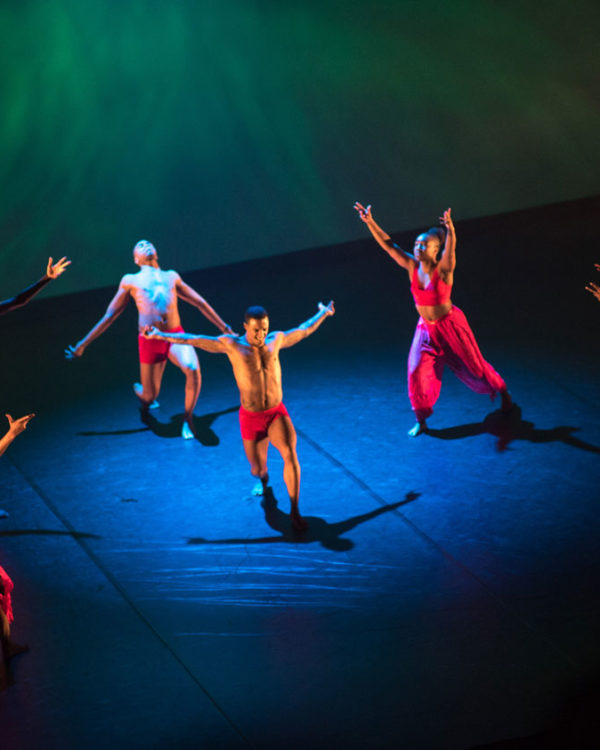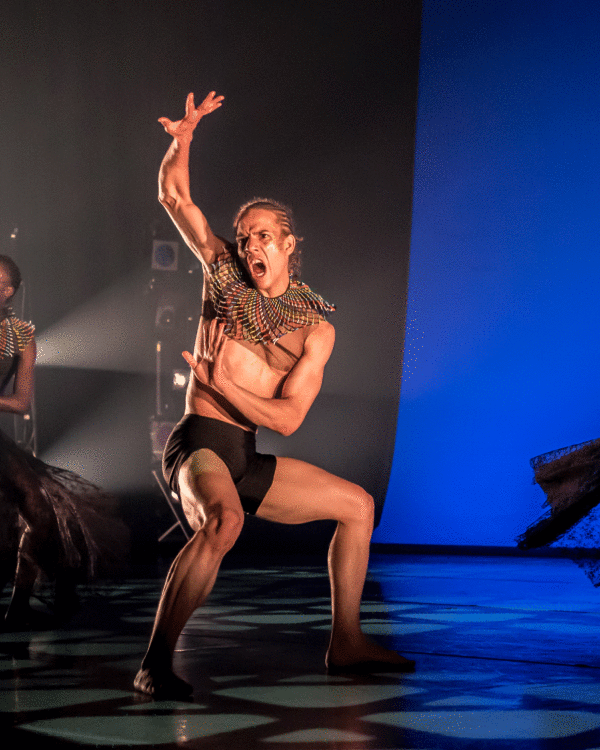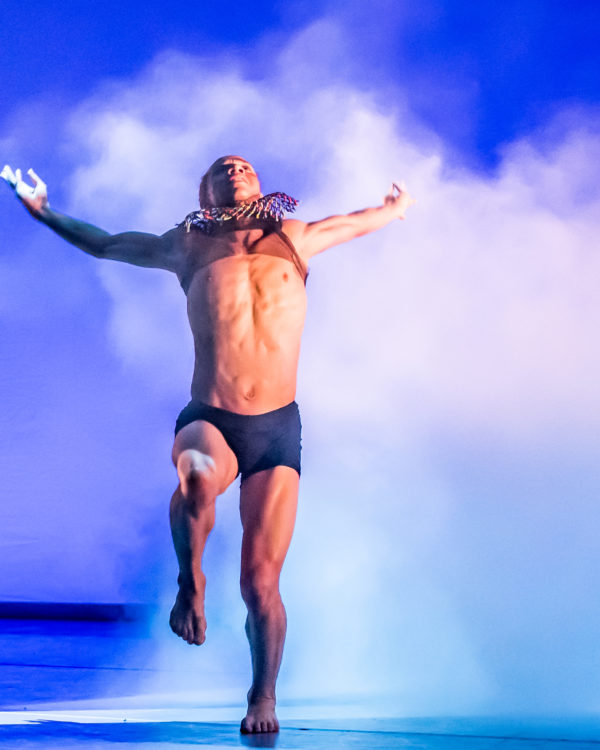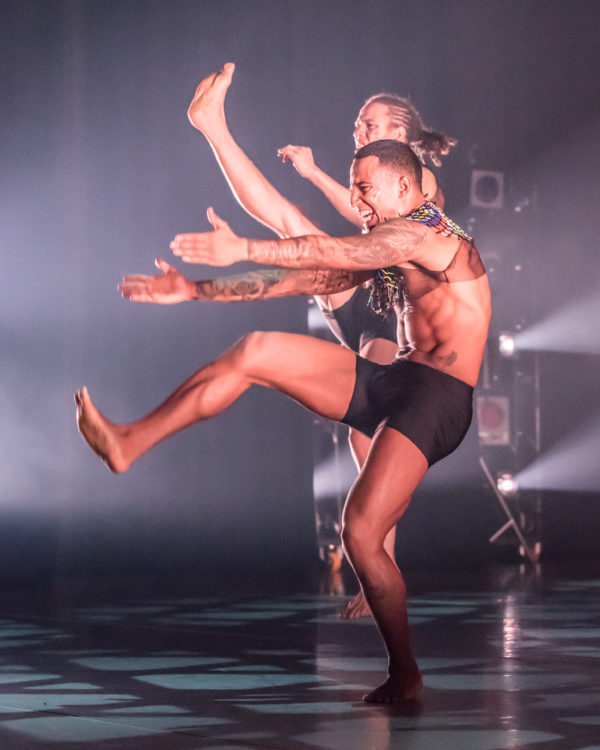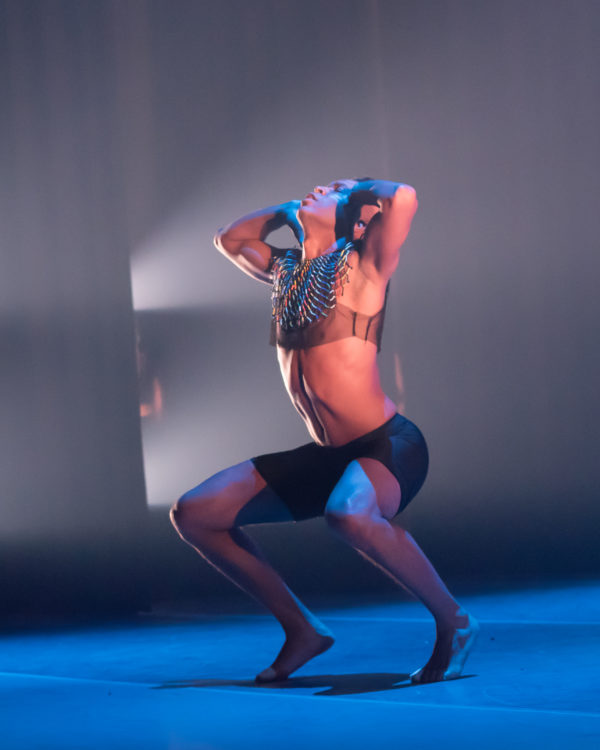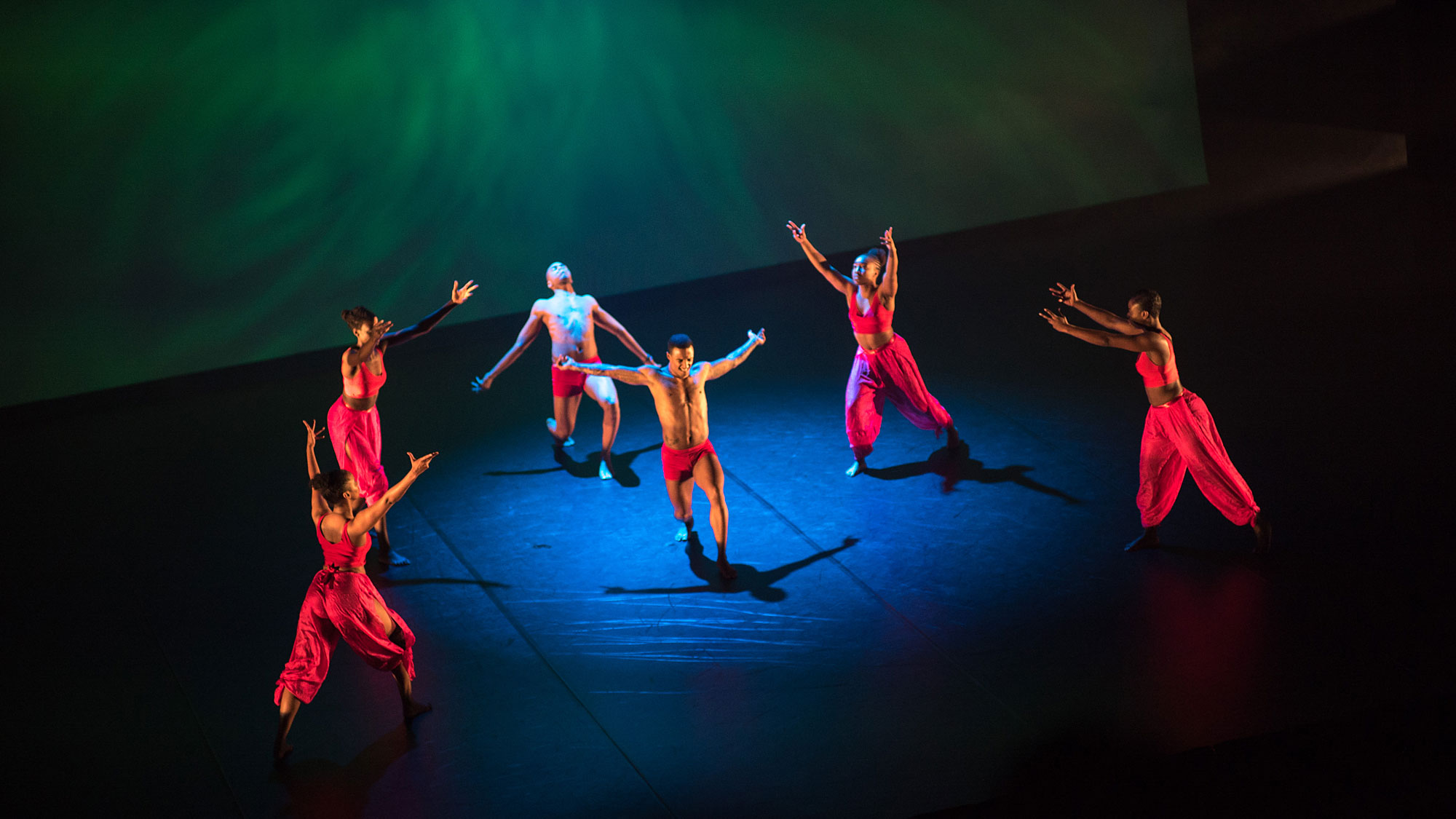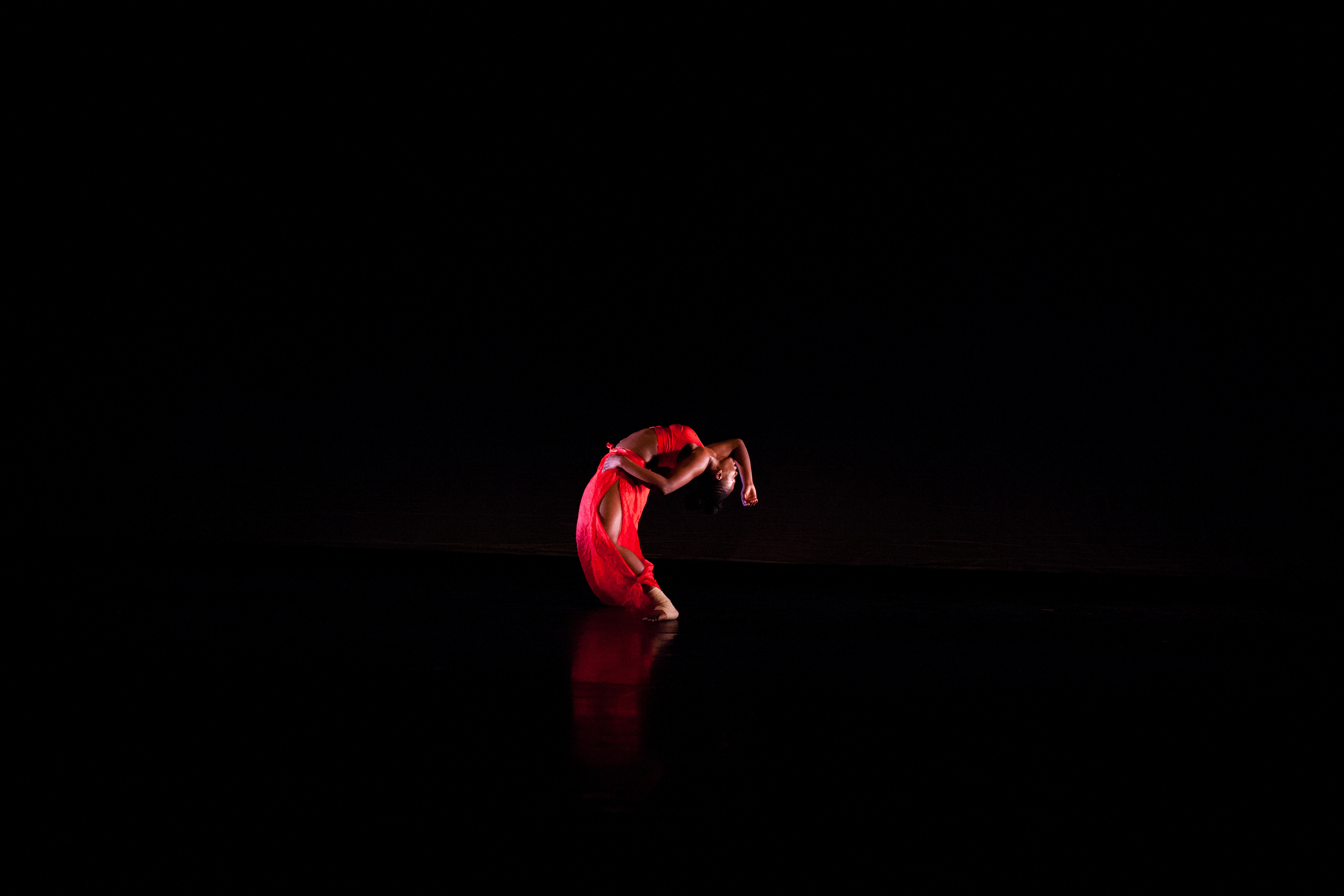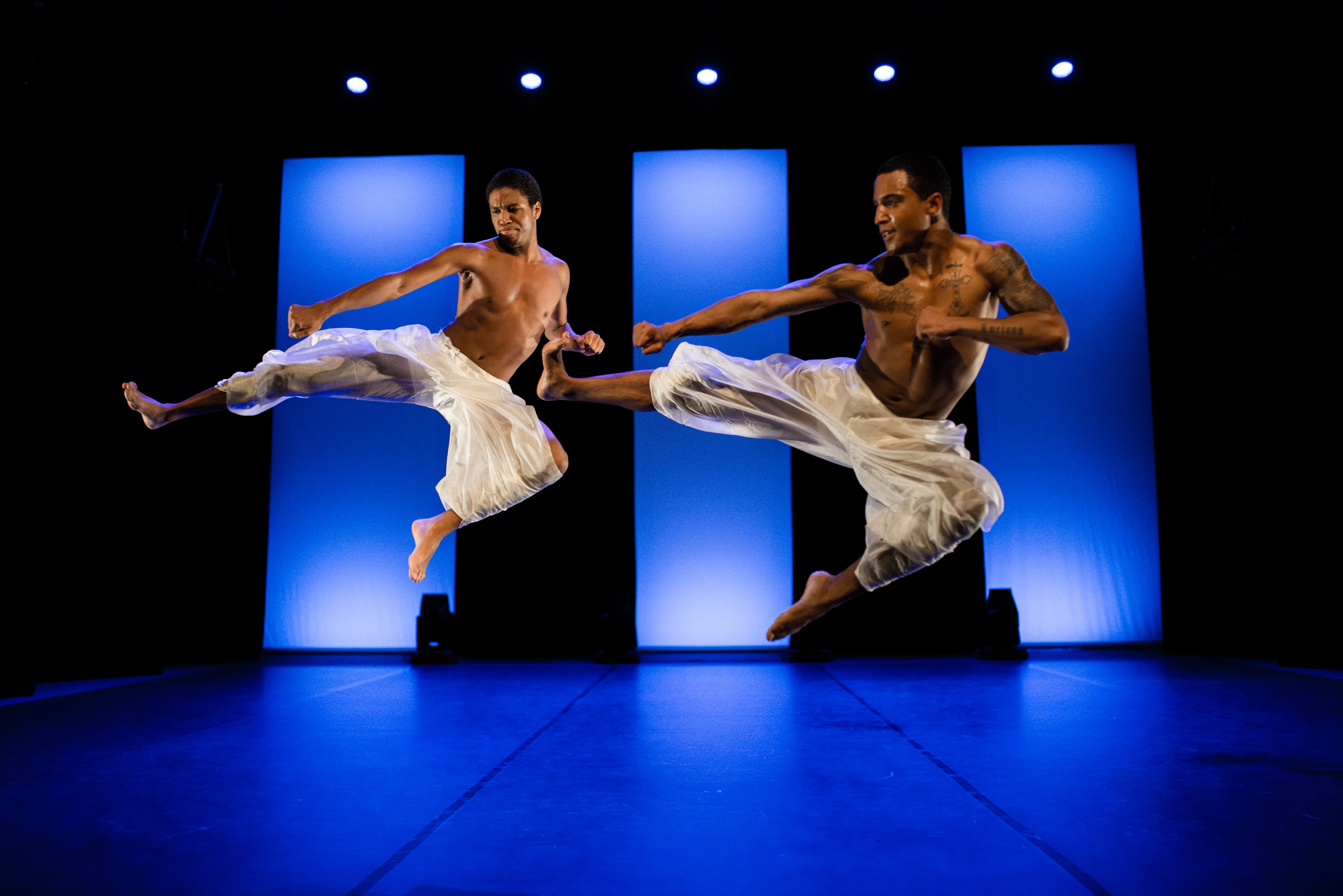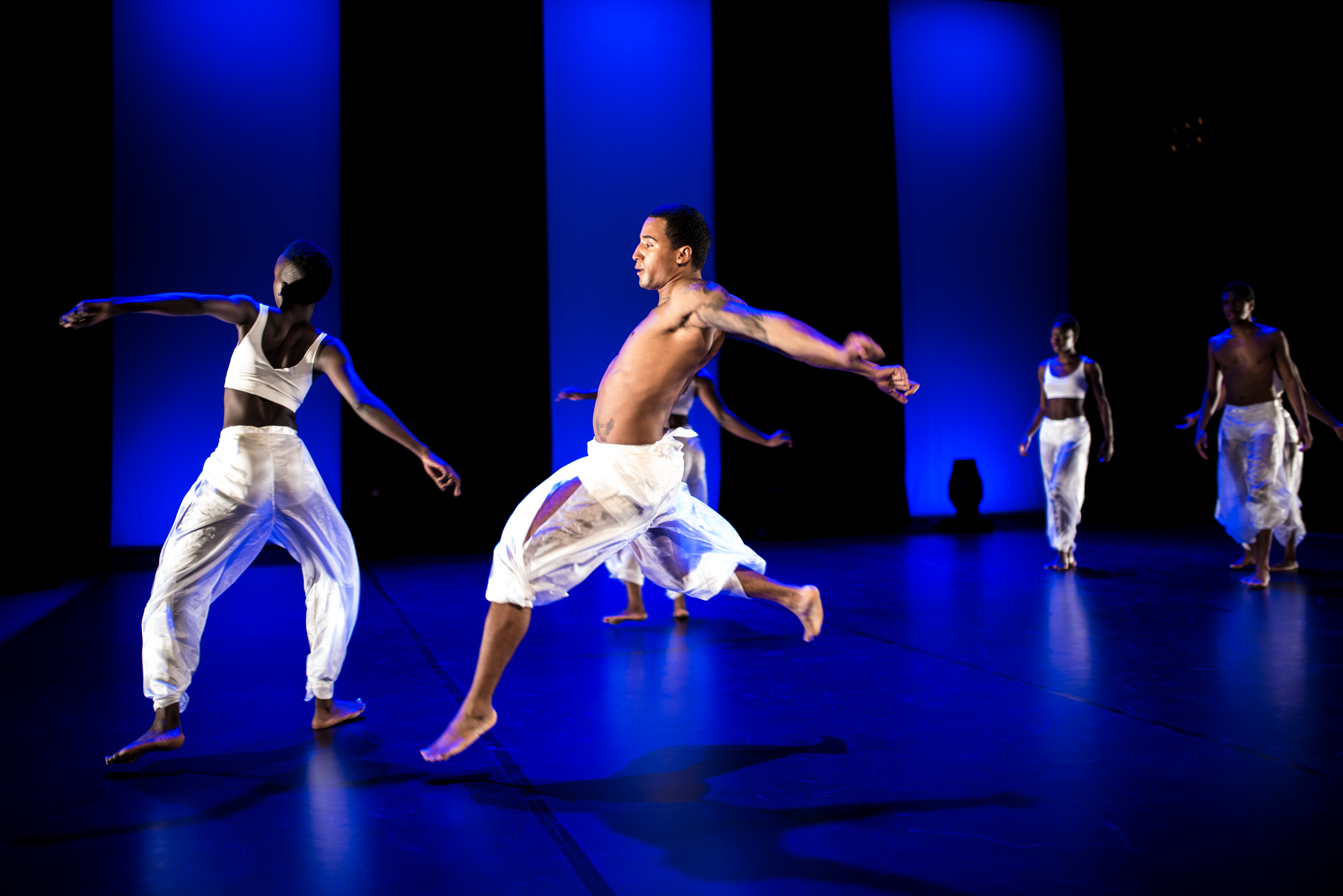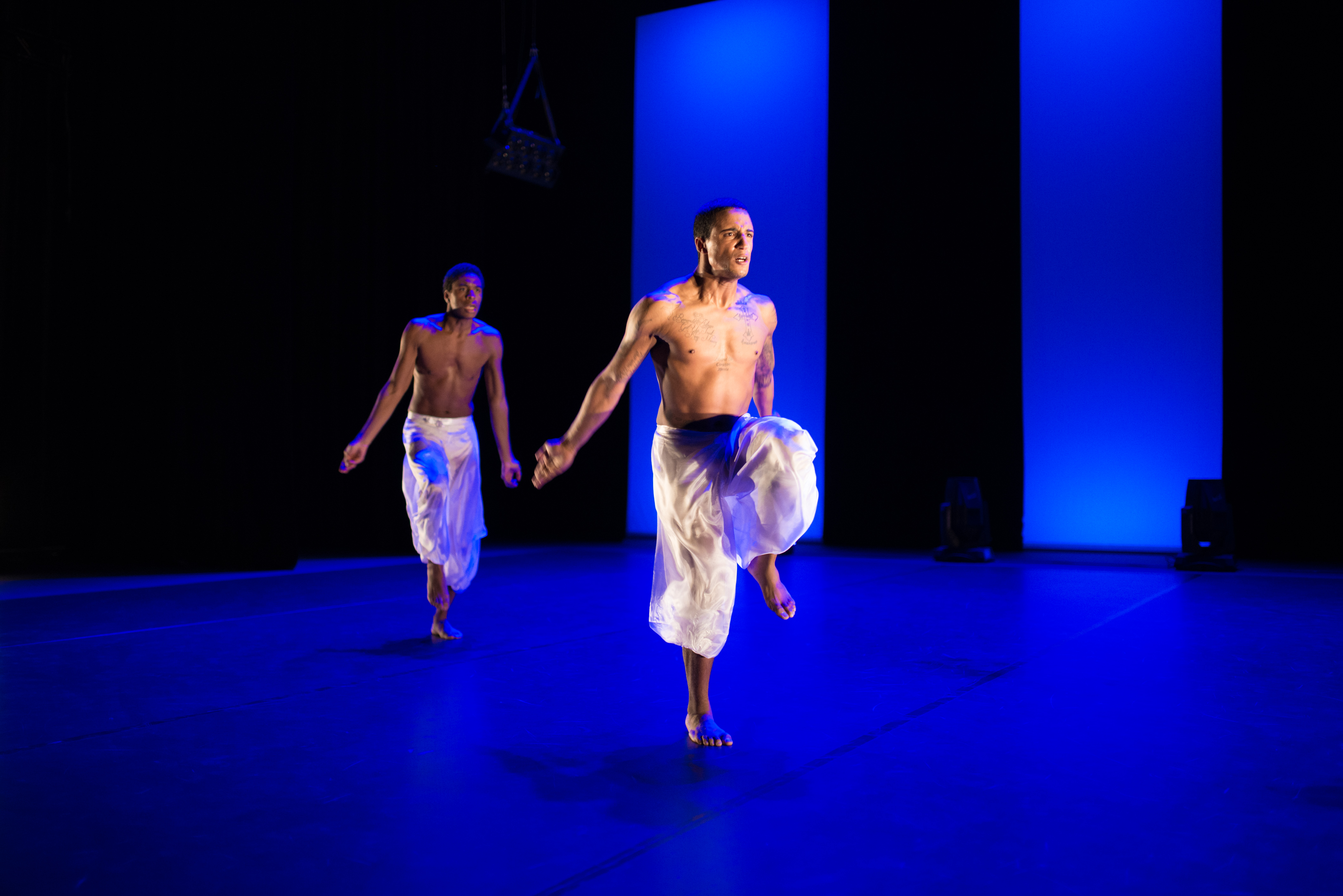TALAWA TECHNIQUE
ANCIENT POWER-MODERN USE
Talawa Technique is a fully codified and examinable technique for Africanistic kinaesthetic movement.
The Talawa Technique™: An Africognosomatic Approach to Dance
The Talawa Technique™, meticulously developed over the past 27 years, represents a groundbreaking advancement in African and African Diaspora dance studies. This technique serves as both a repository and a dynamic framework, facilitating a deeper engagement with Africana dance practices and their philosophical underpinnings. It transcends cultural boundaries, offering significant value to practitioners from diverse backgrounds through its systematic and accessible approach to kinaesthetics and body mechanics.
Created by Thomas Talawa Prestø, the Talawa Technique™ seamlessly merges ancestral movements with culturally contextualized vocabulary and contemporary movement sensibilities. This innovative approach bridges the gap between diverse forms of dance, including stage dance, social dance, club and street dances, traditional and spiritual dances, and many other expressions. The Talawa Technique™ is an Africognosomatic technique grounded in the African and African Diaspora understanding of the body, rhythm, and complex polycentric movement. This fusion creates a rich, dynamic framework suitable for both stage performances and artistic productions, enabling dancers to explore a wide spectrum of movement qualities while remaining deeply rooted in cultural heritage.
Distinct in its combination of rhythmic structures, specialized grounding techniques, and traditional African aesthetic movements like trembling, shaking, undulating, and pulsating, the Talawa Technique™ enriches the dancer's repertoire. The Technique seamlessly co-exists as a blend of danced martial arts, empowered ritual dance, classroom instruction, technical drills, movement research, aesthetic formation, cultural studies, dance and performance theory, praxis, and practice, integrating well with a multitude of purposes and expressions.
The Talawa Technique™ uniquely structures elements from African and Caribbean traditions to foster polycentrism, diverse movement qualities, grounding, and polyrhythms. This approach deconstructs and reconstructs these traditional practices, revealing the distinct qualities of each element both individually and in their combined, enhanced form when intentionally recombined.
Africognosomatic Approach and Cognosomatics
The Talawa Technique™ is fundamentally built on an Africognosomatic approach, which integrates cognition with somatic experiences within an African context. This approach highlights how the body becomes a repository of collective memory, lived experience, and cultural wisdom.
Cognosomatics expands the spectrum of embodied experience to include a bidirectional interchange between interior somatic experiences and external actions and interactions. This term serves as a conceptual bridge between phenomenology and sociology, connecting the deeply personal with the communal. Each action is both an expression of identity and a catalyst for future experiences, perpetuating a continuously evolving cycle that shapes identity based on new experiences and perceptions.
AfriCognoSomatics emphasizes how the body, in an African context, embodies collective memory and cultural wisdom. It focuses on how dance and artistic practices are deeply intertwined with the cognitive processes that reflect heritage, history, and philosophy.
Core Tenets of the Talawa Technique™
The Talawa Technique™ integrates and reinterprets elements intrinsic to African and Caribbean dance traditions, emphasizing polycentrism, a spectrum of movement qualities, grounding, and polyrhythmic expression. This innovative approach involves a meticulous process of deconstruction and reconstruction, revealing the intrinsic qualities of each element and exploring the enriched potential that emerges from their strategic recombination.
Polycentric Movement and Kinetic Selfpolyfication
Polycentric movement is a fundamental concept in the Talawa Technique™, redefining traditional bodily movement by positioning the body as an intricate landscape of interrelated active centers. Each center, operating both independently and in harmony, contributes to a complex and layered kinetic expression. This approach bestows depth and richness upon the dance, distinguishing it from unilinear physical expressions.
Kinetic Selfpolyfication, a key principle of polycentric movement, emphasizes the harmonious coexistence of multiple kinetic centers within the body. It mirrors societal concepts of polycentricity, where multiple centers of power coexist within a single entity. As the Talawa Technique™ posits, "Kinetic Selfpolyfication is the ability to multiply yourself through movement without ever cancelling yourself out," highlighting the infinite potential for dynamic expression and interconnectedness within the dancer's body.
Centers of Movement in Polycentric Dance
Polycentric movement involves activating various centers of movement in the body, each contributing uniquely to the dance's complexity and richness. The key centers of movement include:
- Ankles: Essential for grounding and providing stability, allowing for intricate footwork and balance.
- Hips: Central to the body's core movements, enabling dynamic shifts and fluid transitions.
- Wrists: Facilitating precise and expressive gestures that complement the larger body movements.
- Neck: Allowing for nuanced head movements that enhance the overall expressiveness of the dance.
- Scapulae/Chest: Adding depth and dimension to movements, emphasizing the connection between the upper body and the arms.
The Essence of Polycentric Movement
Polycentric movement in Africana dance embodies a philosophy of collective expression, groundedness, and interconnectedness. It invites dancers to explore the limitless possibilities of their bodies, allowing for a vibrant tapestry of movement that is deeply personal yet resonantly communal. This approach showcases technical prowess and embodies a philosophy of unity and interconnectedness within the dancer's body and the broader communal dance practices.
The Mytho-Technical Animal
A central aspect of the Talawa Technique™ is the concept of the Mytho-Technical Animal, which organizes movement practices, qualities, performance modes, cultural information, and anatomical imagery. The mythical entities—The Spider, The Snake, The Bird, and The Octopus—bind the mind, body, and spirit together in movement, rendering the Talawa-trained body as a Mytho-Technical entity embodying many qualities simultaneously.
The Spider - Principle of Communication
The Spider symbolizes communication and storytelling. Anansi, a well-known character throughout the African Diaspora and on the continent, is a cunning trickster and storyteller who brought stories and storytelling to humans from the Sky God. The gestures of the Talawa Technique™, attributed to the principle of the spider, facilitate precise and expressive communication through movement. The 32 parallel arm positions of the technique, forming 1024 possible pose combinations, are organized under this principle, pre-programming paths that enhance precision and clarity in gestures.
The Snake - Principle of Interconnectedness, Movement Vitality, and Hybridity
The Snake represents interconnectedness, movement vitality, and hybridity. It emphasizes the centrality of spinal articulation, reflecting the belief that movement, symbolized by the snake, represents life and vitality. The snake's grounding in embodied knowledge and instinctual wisdom highlights the importance of the spine in Africana dance, celebrating life through dynamic, articulated movements. The snake's ability to sense vibration and its symbolic role in many West-African and African Diaspora cosmologies underscore its central position in life and healing.
The Bird - Principle of Adaptability
The Bird represents adaptability, balance, and dynamics. Birds thrive in the air, land, and water, symbolizing the bird's impeccable sense of direction and balance. The 15 foot/base positions linked to this principle engage the spine and pelvis, encouraging a polycentric approach to movement and balance. These positions facilitate quick adaptation to minute changes in weight and body stance, reflecting the bird's dynamic presence and adaptability.
The Octopus - Principle of Intelligence
The Octopus symbolizes intelligence and adaptability, mirroring its independently intelligent body structure. The octopus's three hearts—one pumping blood to the organs and two to the extremities—inspire the technique’s focus on heart rate and breath adaptation to movement and rhythm. The octopus's independently intelligent body, with two-thirds of its neurons in its arms, parallels the technique’s use of polycentric movement, where multiple centers are activated simultaneously, and poly-movement, where various body parts move independently yet cohesively.
Systematization through Empirical Research
The systematization of the Talawa Technique™ is the product of extensive research and adaptation, underpinned by an empirical approach to dance ethnography and movement analysis. A comprehensive range of foundational Africana movement vocabulary, including positions, placements, isolations, and movement approaches, was meticulously selected and analyzed from a corpus of 286 dances. This detailed notation system illuminated recurrent motifs, positions, and qualities within the Africana dance lexicon, denoted as 'foundational' elements.
Algebraic Notation and Computational Analysis
Our innovative approach to dance notation, influenced by algebraic principles, facilitated the exploration and documentation of cumulative aspects inherent in Africana dance techniques. By feeding these notations through computational analysis, we ascertained the most frequently used positions and their interrelations, along with distinct movement qualities. This process illuminated commonalities and revealed specific position choices influenced by technical constraints.
From the initial pool of 286 dances, a subset comprising 81 African and 56 Circum-Caribbean dances was selected to rigorously test our foundational theories. The findings established the core structure of the Talawa Technique™, utilizing 32 distinct arm positions, 15 stances, seven levels of spinal isolation, 21 movement qualities, and 22 types of turns.
Movement Research Phrases and Training Regimen
Beyond these base placements, referred to as Akimbos, we developed 158 movement research phrases designed to train and enhance specific qualities such as coordination and musicality. This comprehensive assemblage of positions, movements, and qualities laid the groundwork for what is now recognized as the Talawa Technique™.
Codified Movement Qualities, Turns, and Additional Elements
Movement Qualities
The Talawa Technique™ includes 29 movement qualities, emphasizing the play of associations and naming practices that reflect their nature:
- Trembling
- Shaking
- Contraction
- Extension
- Undulation
- Flexing
- Twisting
- Turning
- Rocking
- Swinging
- Pulsing
- Bouncing
- Swaying
- Grounding
- Winding
- Rolling
- Grinding
- Ticking
- Tocking
- Rotating
- Quaking
- Jukk (hip)
- Jack (hip)
- Stab (hip)
- Jab (hip)
- Legg (hip)
- Push Back (hip)
- Hice (hip)
- DropDung (hip)
Turns (Tornadoes)
The 22 tornadoes (turns) include:
- Butterturns
- Lick Foot Turn
- Round Kick
- Cuttknee
- Flyturn
- Sweep
- Low Sweep
- Sweep’n’switch
- Chat-bout
- Machete
- Eleggua Turn
- Kissass Turn
- Wheel Ń T́un
- Tornado
- WingTurn
- Freeride
- Too Inna Turn
- Mek Room
- One Slap Warnin
- Lockhip Diamond
- Stepround
- Tightup spread
Rhythmomodular Synaesthesia
Rhythmomodular Synaesthesia is a phenomenon where corporeal (bodily movement), optic (visual), sonic (auditory), tactile (tactile and kinesthetic), and ethero (imagined or remembered) rhythms converge and combine, blurring their boundaries. This allows one aspect of rhythm to be experienced as a manifestation of another, creating a synesthetic perception of rhythm. This embodied and immersive experience emerges through the erudite execution of polyrhythmic playing and polycentric dancing.
Gesto-rhythmitization
Gesto-rhythmitization refers to the process by which rhythm and movement are imbued with gestural content, creating a new form of embodied communication. This emphasizes the creation of gestural rhythms that transcend traditional musical rhythm and extend into the realm of movement and gesture.
The Talawa Technique™ and the concept of Technical Adaptive Proprioceptic Acumen represent a sophisticated approach to dance training, rooted in Africana movement practices. By integrating everyday movements into dance, employing props to enhance proprioception, and using mythical animal imagery to organize movement principles, this technique fosters a holistic and dynamic engagement with dance. The emphasis on parallel processing, polycentric movement, and rhythmic computation ensures that dancers can seamlessly integrate complex movements and rhythms, embodying the principles of adaptability, intelligence, and transformation.
The innovative approach to dance notation, influenced by algebraic principles and computational analysis, has furthered our understanding of Africana dance techniques. This comprehensive systematization and methodological approach have established the Talawa Technique™ as a significant contribution to the field of dance, preserving and adapting the rich heritage of Africana dance for contemporary practice. The Talawa Technique™ represents the fusion of ancient wisdom and modern methodology, encapsulated in the essence of 'Ancient Power - Modern Use.'
Technical Adaptive Proprioceptic Acumen (T.A.P.A.) in the Talawa Technique™
Introduction
Technical Adaptive Proprioceptic Acumen (T.A.P.A.) is a fundamental methodology of the Talawa Technique™, created by Thomas Talawa Prestø. This technique, developed over the past 27 years, addresses proprioceptive deficits and compensatory mechanisms by enhancing neuromuscular recruitment, motor unit recruitment, muscle synergy, and neuromuscular coordination. Through its systematic approach, the Talawa Technique™ enables dancers to develop advanced kinesthetic intelligence and bodily awareness, deeply rooted in African and African Diaspora dance practices.
Addressing Proprioceptive Deficit and Compensatory Mechanisms
Proprioceptive deficits impair the ability to sense the position, movement, and action of muscles and joints, leading to improper muscle activation patterns and increased risk of injury. Compensatory mechanisms occur when certain muscles or muscle groups take over the functions of weaker or inhibited muscles, causing muscle imbalances, overuse injuries, and inefficient movement patterns. The Talawa Technique™, through T.A.P.A., enhances various neuromuscular functions to counter these issues.
Key Components Enhanced by T.A.P.A.
1. Neuromuscular Recruitment
Neuromuscular recruitment involves activating specific motor units (a motor neuron and the muscle fibers it innervates) to produce muscle contractions. Effective neuromuscular recruitment ensures that appropriate muscles are engaged for a given task. The Talawa Technique™ enhances this through exercises that integrate complex, multi-joint movements, characteristic of African and Caribbean dance traditions.
- Grounding Techniques: These fundamental techniques enhance the body's connection to the earth, promoting effective neuromuscular recruitment by activating lower body muscles efficiently.
- Polycentric Movement: Encouraging multiple centers of movement within the body ensures that various muscle groups are activated in a coordinated manner.
2. Motor Unit Recruitment
Motor unit recruitment is the activation of additional motor units to increase the strength of muscle contractions. When specific muscle groups do not activate properly, other muscles compensate, often leading to overuse and potential injury. The Talawa Technique™ mitigates this by focusing on balanced motor unit recruitment.
- Dynamic Transitions: Exercises requiring shifting weight and transitioning between movements dynamically engage different motor units, preventing over-reliance on any single muscle group.
- Complex Rhythmic Patterns: Incorporating polyrhythms and complex timing ensures varied and comprehensive motor unit engagement.
3. Muscle Synergy
Muscle synergy involves the coordinated action of multiple muscles to perform complex movements. Disrupted muscle synergies can lead to inefficient movement patterns and increased strain on compensatory muscles. The Talawa Technique™ enhances muscle synergy through targeted exercises that promote coordinated muscle actions.
- Rhythmic Modularity: The focus on rhythm and modular movements promotes the harmonious functioning of muscle groups.
- Isolations and Integrations: Training that includes isolated movements and integrates them into larger sequences develops muscle synergies effectively.
4. Neuromuscular Coordination
Neuromuscular coordination is the harmonious functioning of muscles and the nervous system to produce smooth, efficient, and coordinated movements. Poor coordination can result in delayed or jerky movements, elevating the risk of injury. The Talawa Technique™ improves neuromuscular coordination through exercises that challenge the nervous system and muscles to work in concert.
- Full-Body Integration: Movements engaging the entire body in coordinated actions enhance neuromuscular coordination.
- Vibro-sensing and Body-sensing: Techniques training dancers to sense and respond to their body’s vibrations and movements enhance neuromuscular coordination.
Water Walks: Enhancing Proprioception and Neuromuscular Coordination
A unique aspect of the Talawa Technique™ is the concept of Water Walks. This exercise involves balancing a water bottle on the head while executing rhythmic steps with dynamic alterations. The Water Walks practice transcends mere physicality to embody the metaphor of water—a symbol of unceasing transformation and boundless adaptability. This exercise requires dancers to focus on multiple elements simultaneously, thereby enhancing proprioception and neuromuscular coordination.
Benefits of Water Walks:
- Balance and Stability: The challenge of maintaining balance while performing complex movements enhances the dancer's stability and proprioceptive awareness.
- Rhythmic Integration: Coordinating rhythmic steps with the balance of the water bottle promotes neuromuscular coordination and rhythmic timing.
- Full-Body Engagement: Engaging multiple body parts to maintain balance and rhythm improves overall muscle synergy and neuromuscular recruitment.
Full Corposensoric Rhythmokinetic Computation (FCRC)
An advanced result of T.A.P.A. within the Talawa Technique™ is Full Corposensoric Rhythmokinetic Computation (FCRC). FCRC describes a heightened state wherein the entire body becomes an advanced processor of rhythmic and kinetic stimuli. During this state, the body does not merely respond to sensory input sequentially; it anticipates, integrates, and expresses in a real-time dance dialogue. FCRC embodies a form of pre-emptive cognition, where dancers predict and align their movements with upcoming rhythmic patterns and the forces at play around the body as a result of rhythmic or rhythmically timed propulsion, even before their tangible onset.
Implementation in the Talawa Technique™
Build-Up and Core Aspects
Build-Up Phase:
- Technical Drills: Foundational exercises focus on alignment, conditioning, and the development of endurance, suppleness, awareness, and precision. They are designed to reduce injuries and prepare the body for complex movements.
- Proprioceptive Challenges: Using props like water bottles balanced on the head while performing rhythmic steps with dynamic alterations helps dancers to develop T.A.P.A. by requiring constant adjustments and enhancements in neuromuscular recruitment and coordination.
Core Aspects:
- Exploration: Involves studies in space, time, energy, attitude, intention, spirit, gesture, and emotion. Dancers relate, develop, and explore their inner nature and relationship to the world through movement, enhancing proprioceptive awareness and neuromuscular function.
- Application: Technical exercises are quickly applied to choreography, helping students internalize techniques faster by understanding their practical uses. This integration supports the development of T.A.P.A. by reinforcing muscle memory and proprioceptive skills through practical application.
Technical Adaptive Proprioceptic Acumen (T.A.P.A.) is integral to the Talawa Technique™, providing a sophisticated framework for countering proprioceptive deficits and compensatory mechanisms. By increasing neuromuscular recruitment, motor unit recruitment, muscle synergy, and neuromuscular coordination, T.A.P.A. enhances the dancer’s ability to perform complex movements efficiently and safely. The Water Walks exercise exemplifies the practical application of T.A.P.A., challenging dancers to integrate balance, rhythm, and full-body engagement. Furthermore, Full Corposensoric Rhythmokinetic Computation (FCRC) highlights the advanced outcomes of T.A.P.A., where the body becomes an anticipatory and integrative processor of rhythmic and kinetic stimuli. This concept, rooted in the rich traditions of Africana dance, underscores the innovative fusion of ancient wisdom and modern methodology that defines the Talawa Technique™.
THE BUILD UP
TECHNICAL: Various movement techniques and practices, activates and engages the students in the essential work of alignment and conditioning. The techniques are designed to develop endurance, suppleness, awareness, economy, and precision in moving. These exercises are also intended to reduce injuries; including excessive spinal- tension, tension, awkward gestures, a casual carriage, and inexpressive mobility. Studies in African anatomy (different view of the body than in the Western world, this is reflected in dance, buttocks is a five directional muscle), further the student's self-awareness and provide practical knowledge for safe and effective use of the body.
EXPLORATION: This involves studies in space, time, energy, attitude, intention, spirit, gesture, and emotion, in which students relate, develop and explore their inner nature and relationship to the world and other people in terms of and through movement. Through improvisations and guided experimentation in a variety of movement practices, students will explore the relationship of mind, spirit, and body. How these things are expressed through an African, Black, and Caribbean body language, expression, and aesthetics, both historically and contemporary.
APPLICATION: In TT-Tech application quickly follows technical exercises. Often technical exercises are directly applied to choreography and movement. TT-Tech believes that an informed student that understands the uses of technique stays more motivated, and is quicker to internalize technique. It also helps separate what is aesthetics and what is technique.
Dance without technique is often limited, and lacking aesthetics, but technique without dance is not dance at all.
Talawa 200
CERTIFICATION
Talawa-technique seeks to unlock the body, and give dancers the control needed to master the undulations, shakes, curves, shapes, and qualities of the Africanistic movement. The technique is considered one of the most comprehensive techniques for mastering African body movement styles, and separates the pure mechanics of movement from aesthetic nuances.
- Talawa-Technique acknowledges that teaching abilities and dancing abilities are not necessarily linked. Africanist dance styles are often very physical. Teaching is often linked to the instructor's ability to physically show the movement. The codification, language and technical buildup of the Talawa-Technique, makes it possible to teach without having the physical capacity to demonstrate.
- The Griot classification is linked, and students of this must acquire the same level of dance as instruction.
DANCE EDUCATION: TALAWA-TECHNIQUE
*Module 4-7 in both dance and Instructing was given 15 study points at the University of Trondheim (NTNU), in 2011-12.
| TITLE | DECRIPTION |
MODULE |
| TALAWA- INITIATE | Introduction to Africanistic and Caribbean movement and recreational dance. |
1-6 |
| TALAWA- AKIMBO LEVEL | Techniques, exercises and modules for professional and trained dancers within western styles, or dancers with basic within African and Caribbean Dance |
7-14 |
| TALAWA- YANVALOU LEVEL | Professional Training for Caribbean and African trained dancers. |
15-25 |
| TALAWA- GRIOT | Professional master technical dance training utilizing levels 1-32 |
25-32 |
INSTRUCTOR CERTIFICATION: TALAWA-TECHNIQUE
| TITLE | DECRIPTION |
MODULE |
| TALAWA- INITIATE | Recreational dance for teens, adolescent, and elders. |
1-6 |
| TALAWA- AKIMBO | Techniques, exercises and modules for professional and trained dancers within western styles, or dancers with basics within African and Caribbean Dance |
7-14 |
| TALAWA- YANVALOU | Professional Training for the Caribbean and African trained dancers. |
15-20 |
| TALAWA- MASTER INSTRUCTOR | Instructor certified to teach the Talawa-technique module 1-25. |
21-25 |
| TALAWA-GRIOT | Grand master can certify master instructors and wholly teach every module of the technique and theory. |
26-32 |
*Module 4-7 in both dance and Instructing was given 15 study points at the University of Trondheim (NTNU), in 2011-12.
EMBODYING FLUIDITY: AN EXPLORATION OF "WATER WALKS" IN CONTEXT OF MOTION AND METAPHOR
"Water Walks" presents a captivating exploration into the union of physical discipline and metaphoric resonance, providing a nuanced medium to delve into principles of balance, adaptability, and the omnipresence of change. Through the elementary act of balancing a water bottle atop one's head whilst navigating through technical exercises, the practice transcends mere physicality to embody the metaphor of water— a symbol of unceasing transformation and boundless adaptability. This paper seeks to unfold the layered dimensions of "Water Walks," examining it as a vehicle for understanding and embodying equilibrium amidst the unrelenting tide of life's alterations.
Technical Embodiment of Balance:
The act of balancing a water bottle in "Water Walks" is a concerted effort that demands acute awareness of one’s body and the environment. It challenges the practitioner to maintain a delicate equilibrium, a task that cultivates coordination, control, and proprioception. This technical aspect serves as a physical foundation to delve into the broader metaphorical insights offered by the practice.
A Somatic Connection: Embracing the Water Within and Without:
Central to "Water Walks" is the symbolic and somatic connection to water. The water bottle atop one's head serves as a tangible link to the water within the body, urging practitioners to harmonize their movements with the fluid nature of water. Embracing the weight of the water bottle, feeling its presence extending through the spine to the floor, and moving in unison with it fosters a deeper somatic connection, enhancing awareness and presence.
The Dance of Acceptance and Fluid Transition:
"Water Walks" educates practitioners in the art of acceptance and fluid transition. Each step is a commitment, a seamless flow from the present moment into the next. This practice cultivates a mental state of coolness and acceptance, as any agitation or hesitation disrupts the equilibrium, causing the bottle to fall. The exercise embodies the principle of fluid transition, encouraging practitioners to pour their presence into each movement, much like water flowing effortlessly along a path.
Following the Water: An Ancestral Communion:
The practice extends into a poignant exercise named "Following the Water." Here, practitioners carry the water of an elder, absorbing ancestral narratives as they move. This ritual fosters a deeper understanding of one’s lineage, tying the individual to the ceaseless flow of ancestral waters that have coursed through generations. It encapsulates a somatic and narrative tradition, linking individuals to the waters of their origins.
The Metaphysical Bottle in Africana Dance:
A critical observation is the presence of a "metaphysical bottle" in dances rooted in African traditions. This principle, originating from traditional practices of carrying loads atop the head, has permeated various dance forms like salsa, samba, reggae, and house. With modern living veering away from such traditional practices, "Water Walks" emerges as a crucial exercise to rekindle this unique movement quality and awareness, reconnecting practitioners to a fundamental aspect of Africana dance heritage.
Metaphor of Water: Embracing Change:
The water metaphor in "Water Walks" is profound. It invites reflections on the nature of change and the necessity of adaptability, much like water's unyielding fluidity amidst varying landscapes. The ocean, with its endless motion and vast expanse, mirrors life's inexorable shifts, offering a tangible symbol of life's fluid narrative.
The Dualism of Stability and Flux:
The practice elucidates the dualism of stability and flux, reminding practitioners that stability can coexist with change. Through the act of balancing, participants learn to navigate the fluid terrains of life while retaining a core of stability, embodying resilience amidst life's multifarious currents.
Rhythmic Repetition: A Holistic Integration:
The rhythmic cadence of "Water Walks" transcends physical exercise to offer a meditative endeavor, intertwining the rhythmic repetition with the symbolic resonance of water, fostering a holistic experience that integrates physical, mental, and metaphorical dimensions.
"Water Walks" as a Microcosm of Existence:
The practice unfolds as a microcosm of life's broader narrative, inviting recognition of change as an intrinsic part of life's journey. Through the lens of "Water Walks," participants are urged to navigate life's currents with grace and resilience, embodying the boundless adaptability symbolized by water.
"Water Walks" emerges as an exercise that intertwines physical coordination with metaphorical exploration. Through its simple yet profound premise, it serves as a vessel to delve into the essence of balance, adaptability, and the inexorable nature of change, enriching the practitioner’s understanding of these principles both in the realm of physical movement and in the broader spectrum of life's narrative. Through this exploration, "Water Walks" illuminates the rich interplay between motion, metaphor, and the multifaceted narrative of human existence.

